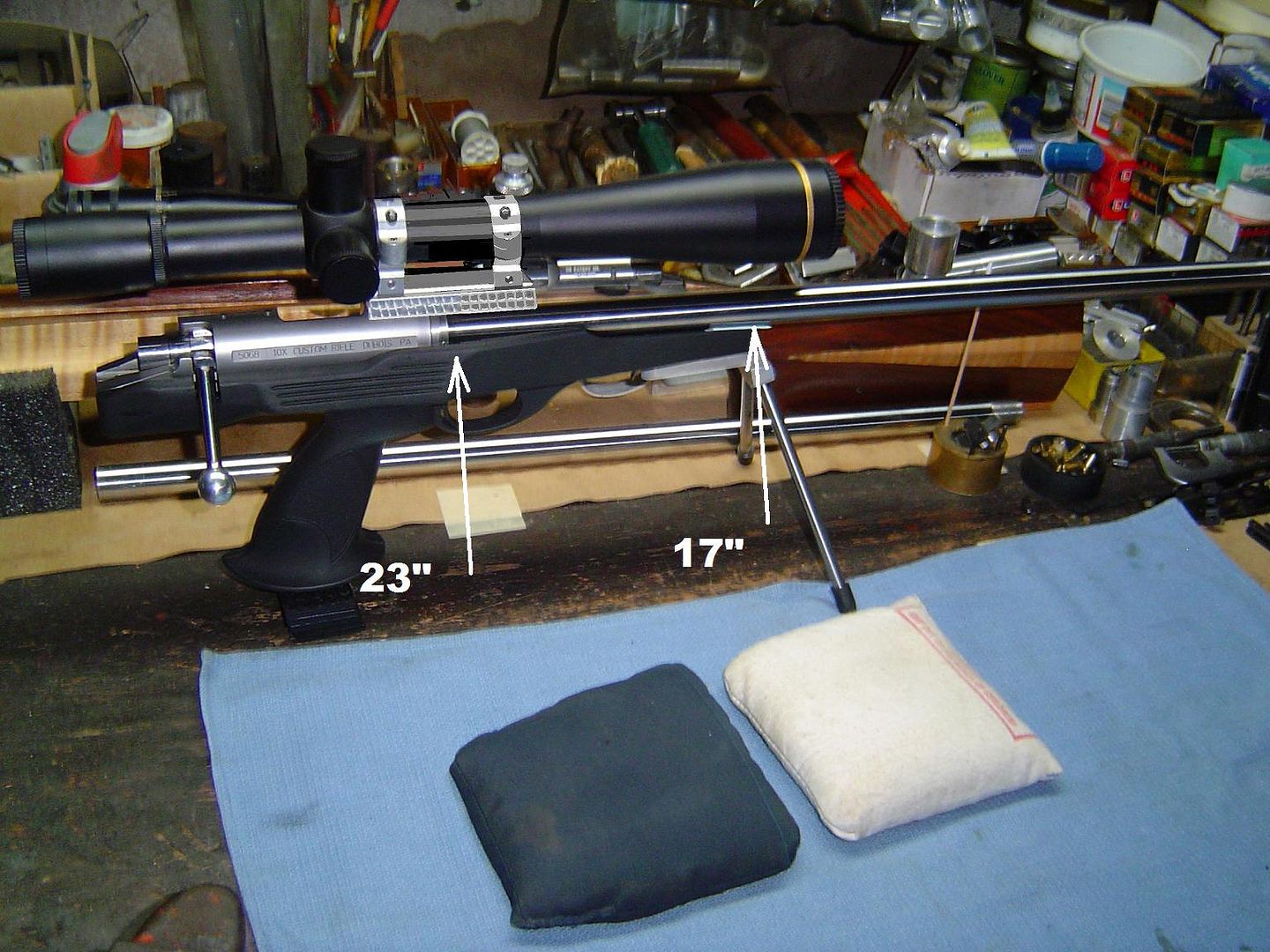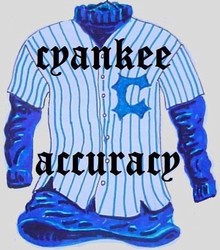Bill Calfee
Gun Fool
Barrel vibrations verses barrel stiffness
CYA friends:
On another thread here on CYA I discussed me accidentally shooting my new MD-PAS triple pistol with a paper wedge between the fore end of the stock and the barrel....
My muzzle was no longer stopped.
Because with the wedge in place, my .800" diameter barrel's vibration pattern was reacting to the much stiffer 17" portion of the barrel.
That wedge became the new face of the action, as far as barrel vibrations were concerned.

______________________
It's fascination how the World turns.
If any of you have ever owned a Remington Model 700 rifle, and have taken it apart, you'll see that Remington left a bearing pad in the fore end of the stock, to put upward pressure on the barrel.
Remington had no idea as to why this upward pressure on the barrel caused the entire line of their rifles to shoot better, they just knew they did with that upward pressure on the barrel, especially their light weight sporter sized barrels.
The reason Remington's barrels, as a whole, shot better with the upward pressure, was because the fore end pad shortened the effective vibration producing stiffness of those barrels.
The stiffer the barrel, the closer the exact center of the parallel node is to the exit of the crown.
The closer the exact center of the parallel node is to the crown, the less severe are the muzzle oscillations, hence better accuracy.
The same thing happened when Remington and Winchester put fore end pressure points in the stocks of their rimfire target rifles.
______________________
Understanding the parallel node, means understanding what a muzzle device is used for, and how it works to enhance accuracy.
Your friend, Bill Calfee
_______________________
PS:
Back in my varmint hunting days, the first thing I'd do to a new Remington Model 700 rifle was to float the barrel...
And I wasn't the only one who did this......
And what I discovered, when I floated those Remington barrels, was some of them seemed to shoot better, but a bunch of them didn't, being perfectly honest with myself.
But back then, I had absolutely no idea as to exactly why a lot of those Remington's shot better with that fore end pressure.
Now I do.
CYA friends:
On another thread here on CYA I discussed me accidentally shooting my new MD-PAS triple pistol with a paper wedge between the fore end of the stock and the barrel....
My muzzle was no longer stopped.
Because with the wedge in place, my .800" diameter barrel's vibration pattern was reacting to the much stiffer 17" portion of the barrel.
That wedge became the new face of the action, as far as barrel vibrations were concerned.

______________________
It's fascination how the World turns.
If any of you have ever owned a Remington Model 700 rifle, and have taken it apart, you'll see that Remington left a bearing pad in the fore end of the stock, to put upward pressure on the barrel.
Remington had no idea as to why this upward pressure on the barrel caused the entire line of their rifles to shoot better, they just knew they did with that upward pressure on the barrel, especially their light weight sporter sized barrels.
The reason Remington's barrels, as a whole, shot better with the upward pressure, was because the fore end pad shortened the effective vibration producing stiffness of those barrels.
The stiffer the barrel, the closer the exact center of the parallel node is to the exit of the crown.
The closer the exact center of the parallel node is to the crown, the less severe are the muzzle oscillations, hence better accuracy.
The same thing happened when Remington and Winchester put fore end pressure points in the stocks of their rimfire target rifles.
______________________
Understanding the parallel node, means understanding what a muzzle device is used for, and how it works to enhance accuracy.
Your friend, Bill Calfee
_______________________
PS:
Back in my varmint hunting days, the first thing I'd do to a new Remington Model 700 rifle was to float the barrel...
And I wasn't the only one who did this......
And what I discovered, when I floated those Remington barrels, was some of them seemed to shoot better, but a bunch of them didn't, being perfectly honest with myself.
But back then, I had absolutely no idea as to exactly why a lot of those Remington's shot better with that fore end pressure.
Now I do.
Last edited:

